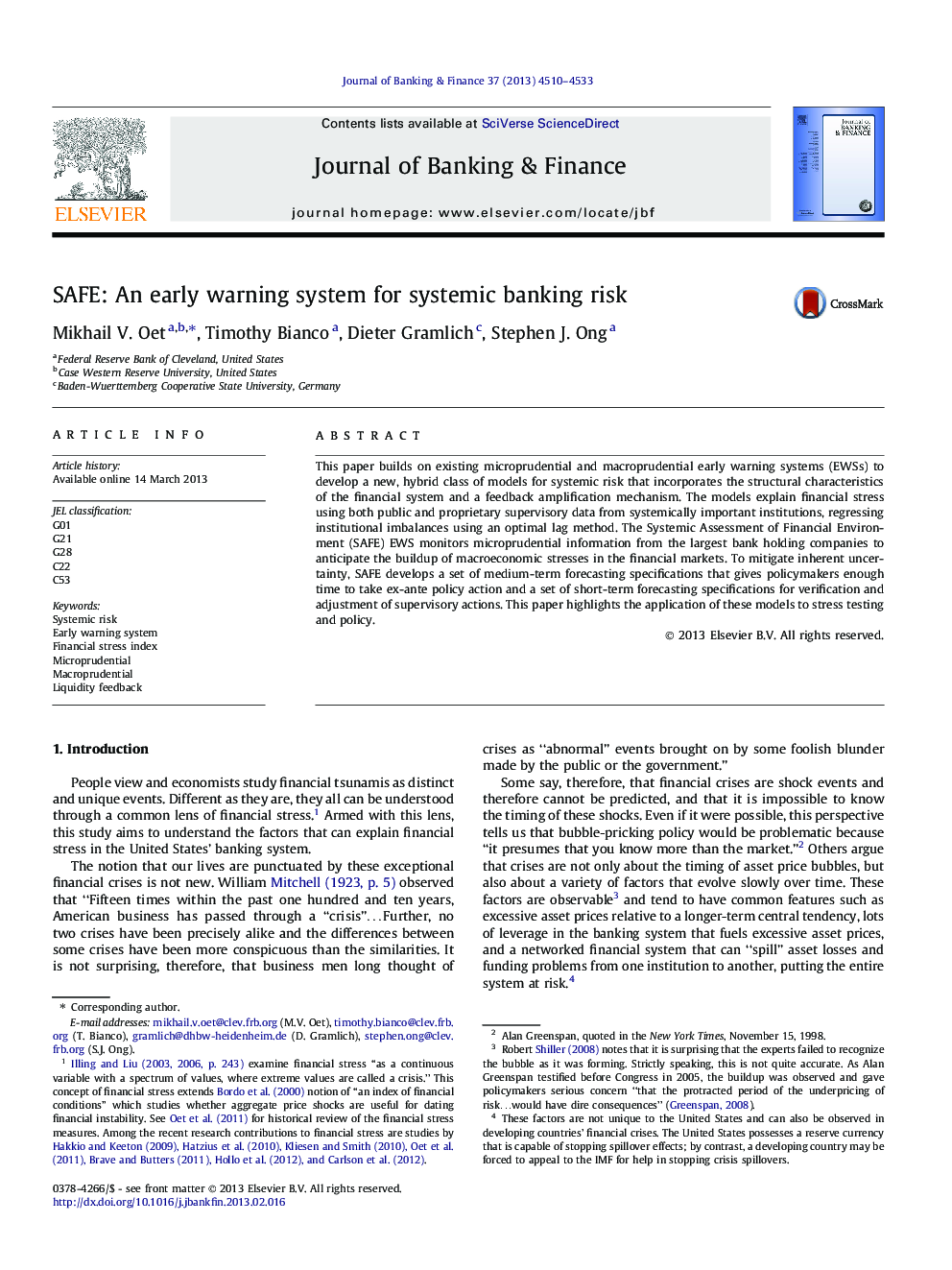| Article ID | Journal | Published Year | Pages | File Type |
|---|---|---|---|---|
| 5089172 | Journal of Banking & Finance | 2013 | 24 Pages |
â¢Models are developed that explain systemic stress by institutional imbalances.â¢Imbalances (return, risk, liquidity, structure) use public and supervisory data.â¢Models use two lag horizons: medium for ex-ante action, short for verification.â¢Institutional data consists of panel of top 25 US bank holding companies.â¢Applications highlight stress testing and policy.
This paper builds on existing microprudential and macroprudential early warning systems (EWSs) to develop a new, hybrid class of models for systemic risk that incorporates the structural characteristics of the financial system and a feedback amplification mechanism. The models explain financial stress using both public and proprietary supervisory data from systemically important institutions, regressing institutional imbalances using an optimal lag method. The Systemic Assessment of Financial Environment (SAFE) EWS monitors microprudential information from the largest bank holding companies to anticipate the buildup of macroeconomic stresses in the financial markets. To mitigate inherent uncertainty, SAFE develops a set of medium-term forecasting specifications that gives policymakers enough time to take ex-ante policy action and a set of short-term forecasting specifications for verification and adjustment of supervisory actions. This paper highlights the application of these models to stress testing and policy.
